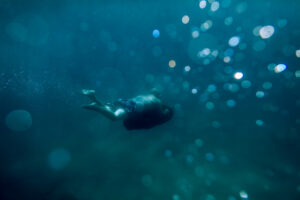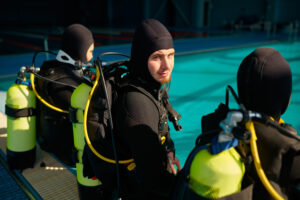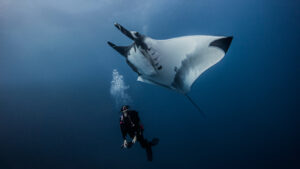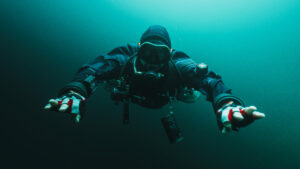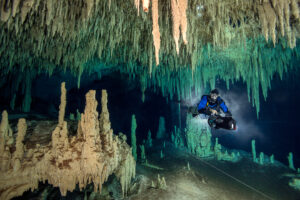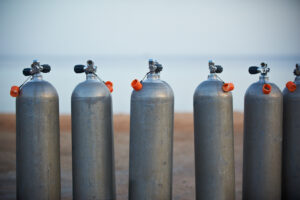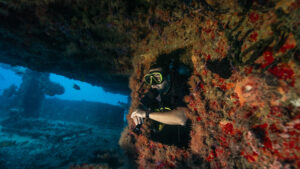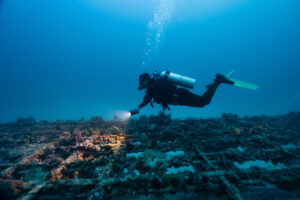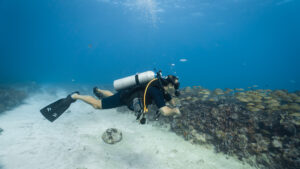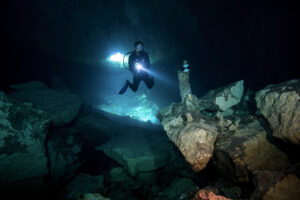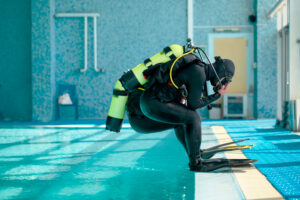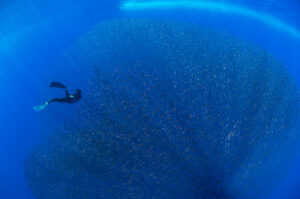What is Residual Gas in Scuba Diving?
Residual gas, a significant concept in scuba diving, refers to the volume of gas that remains in a diving cylinder from a previous fill. Understanding and managing residual gas is crucial for divers, as it can have implications for safety, dive planning, and equipment efficiency.
Definition and Relevance
Residual gas refers specifically to the portion of gas left in a scuba cylinder after a dive. Depending on the previous usage and the time since the last refill, the residual gas may include a mix of gases, such as oxygen, nitrogen, and, in some cases, helium, especially in technical diving applications.
The residual gas’s composition and pressure can impact the quality and safety of the subsequent gas mix added during the next cylinder refill. Divers and fill station operators must consider the residual gas when preparing cylinders for a new dive, as it can affect both the gas blend’s composition and the total available gas volume for the next dive.
Implications for Dive Safety
Residual gas can contribute to potential safety risks if not managed properly. If the remaining gas contains a high proportion of nitrogen, it could lead to an unintended elevated risk of nitrogen narcosis or decompression sickness in the subsequent dive. Similarly, if the residual gas contains a high percentage of oxygen and is topped up with an air mix, it could lead to an unintended increase in the partial pressure of oxygen, posing a risk of oxygen toxicity.
Divers using nitrox or trimix need to be particularly aware of these risks and ensure their cylinders are appropriately managed to prevent any adverse health effects. Fill station operators usually bleed the cylinder—release the residual gas—before refilling it with a different gas mix to mitigate these risks.
Role in Dive Planning
Considering residual gas is critical in dive planning. The volume of residual gas directly affects the total amount of breathing gas available for a dive. If a cylinder is partially filled on top of a significant volume of residual gas, the diver may overestimate their available gas supply, which could lead to potentially dangerous situations underwater.
Furthermore, the residual gas’s composition can affect the dive plan, especially for technical divers who use different gas mixes for different dive phases. If the residual gas’s makeup does not match the intended gas mix, the planned dive depths, bottom times, and decompression schedules may need to be adjusted accordingly.
Equipment Efficiency and Maintenance
Residual gas also has implications for the maintenance and efficiency of scuba equipment. If a cylinder is repeatedly topped up without occasionally being fully bled, the constant high pressure may contribute to faster wear and tear of the cylinder and its valve. Also, gas that remains in a cylinder for extended periods can lead to internal corrosion, particularly in humid or salty environments, reducing the cylinder’s lifespan.
Moreover, the quality of the residual gas can affect the performance of the diving equipment. For instance, if the gas has been contaminated—by water vapor, for example—it could lead to internal corrosion or, in the worst case, damage to the diver’s breathing apparatus.
Residual Gas Management Techniques
Understanding how to manage residual gas effectively is a skill that every diver, whether recreational or technical, should master. The strategies for residual gas management can be divided into two broad categories: cylinder bleeding and gas blending.
Cylinder Bleeding
Cylinder bleeding involves releasing the remaining gas in a cylinder before it is refilled. This process ensures that the new gas mix’s composition is not influenced by the residual gas. Cylinder bleeding is particularly important when changing gas mixes between dives, such as switching from air to nitrox or trimix. This process is usually carried out at the fill station before refilling the cylinder. However, divers should be aware of the need for cylinder bleeding and ensure that it has been done correctly.
Gas Blending
Gas blending involves adding a new gas mix to a cylinder containing residual gas, taking into account the residual gas’s composition and pressure. This method requires precise calculations to achieve the desired final gas mix. It is used mainly by technical divers who have the training and equipment to carry out such calculations and blend gases accurately. Gas blending should only be done by individuals with specialized training to avoid the potential risks of inaccurate gas mixes.
Residual Gas Measurement
Residual gas can be measured using a pressure gauge, which indicates the remaining pressure in the cylinder. This measurement is typically done before and after each dive to monitor gas consumption and ensure that there is enough gas for the next dive. Divers should always check the residual gas pressure before starting a dive to avoid running out of gas underwater.
The Role of Training and Experience
Managing residual gas effectively requires training and experience. Divers should undergo proper training to understand the implications of residual gas and learn the techniques for managing it. They should also gain experience through regular diving, which allows them to become familiar with their gas consumption rates and how residual gas affects their dives.
The Future of Residual Gas Management
With advances in diving technology, new methods for managing residual gas are being developed. For example, digital pressure gauges and dive computers can now provide real-time data on gas consumption and residual gas volume, helping divers make informed decisions during their dives.
Key Takeaways
Residual gas is an important aspect of scuba diving that requires careful management. By understanding its implications and using the appropriate techniques, divers can ensure their safety and make the most of their underwater adventures. The future of scuba diving will undoubtedly bring new challenges and opportunities in residual gas management, and it is up to today’s divers to adapt and evolve with these changes.
Residual gas, though often overlooked, plays a pivotal role in scuba diving. It has implications for dive safety, planning, and equipment maintenance. Divers and fill station operators need to manage residual gas appropriately to ensure a safe and efficient diving experience. As diving techniques and equipment continue to evolve, so does the understanding and management of residual gas, ensuring the sport’s continual development and the safety of its participants.


